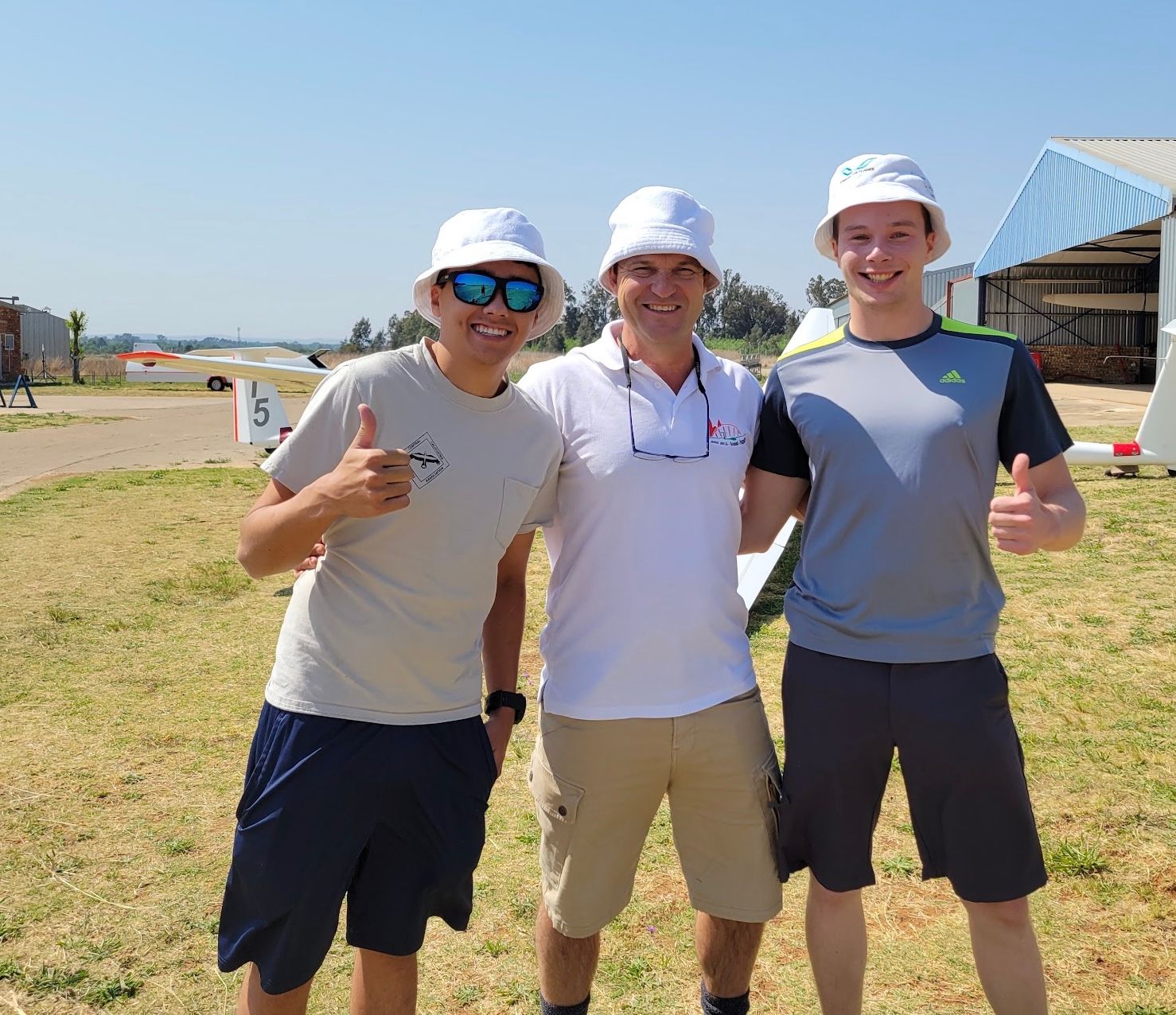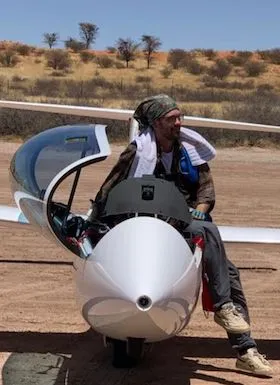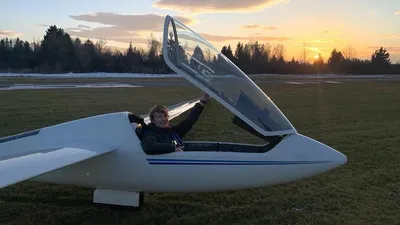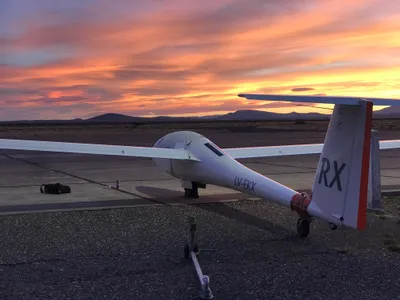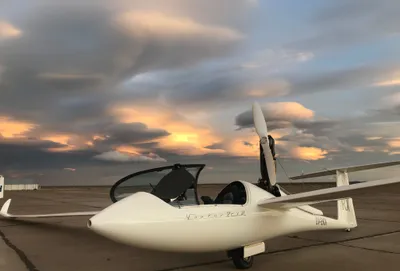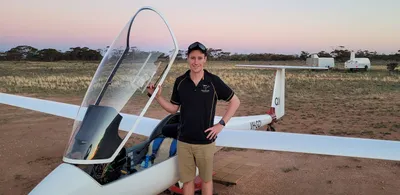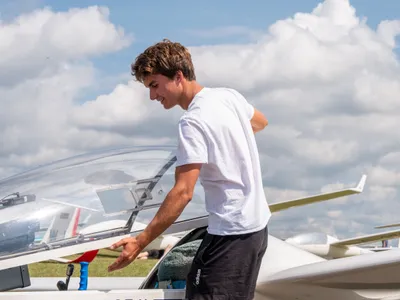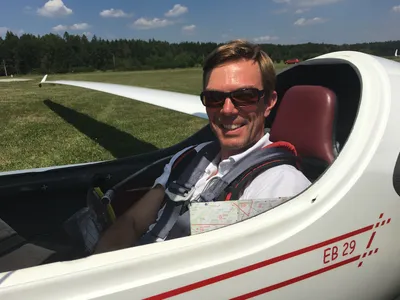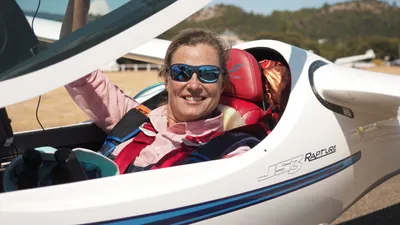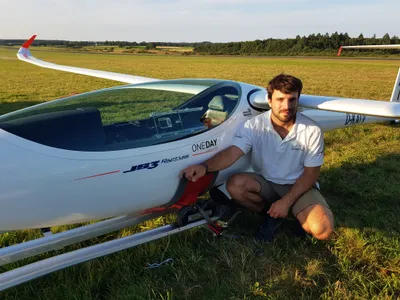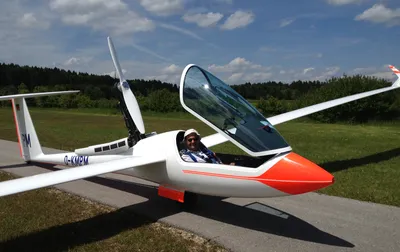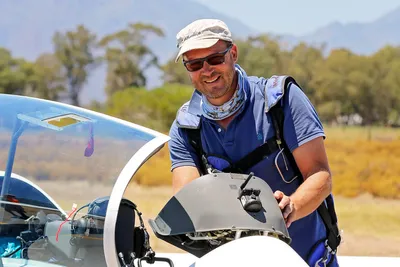Zachary Yamauchi | Gliding in South Africa
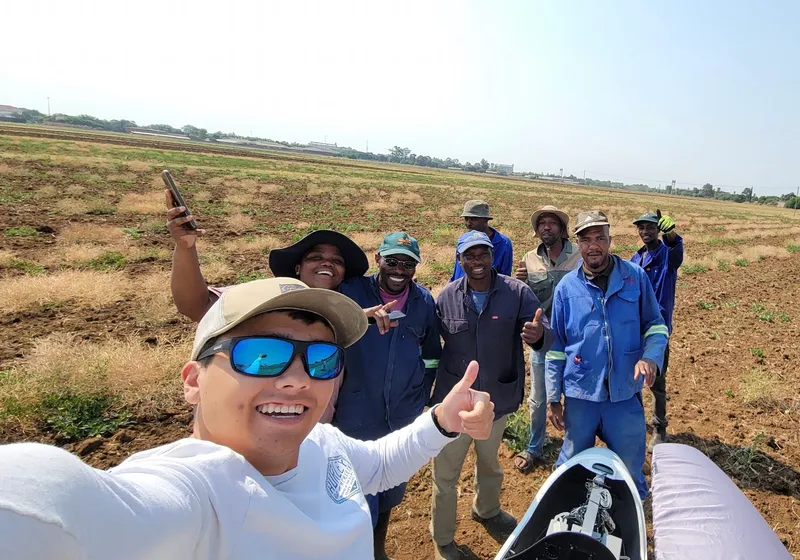
On the 1st of October 2022 the South African Nationals in 15m-, Club- and 2-Seater-Class started.
Hey Zach, we hope your adventure in South Africa was a blast. Before we get into it, how did you find out about the WeGlide JSChallenge?
In early 2022, I discovered your new online soaring contest platform WeGlide. Unlike other gliding platforms, which have been around long before my entry into the sport, WeGlide is a relatively new feature-packed flight scoring and analysis program. While getting familiar with the site and investigating the features of WeGlide, I came across multiple contests and promotions that the site hosts in addition to the national and international sprint, and free distance championships. One of these contests caught my eye of the dozen or so listed on the site. The Jonker Sailplane Challenge was set up with the goal of sending two junior pilots, one from Europe, and another from outside of Europe, to the South African Club Class Nationals. Jonker Sailplanes would provide the winners of the JS challenge with a glider to fly for the contest, accommodations for the duration of their stay, and cover all associated contest entry and tow fees. In order to be chosen, each pilot would have the highest cumulative handicapped speed on the 2 fastest flights in their respective regions. Upon learning of this challenge, I made it my season goal to win the contest.
What were your plans to get these fast flights? We saw you didn't just fly from your home airfield in California.
No. I wanted to maximize my chances of winning the Challenge. For this reason, I planned a trip to Ely, Nevada. I had heard stories of the epic weather and incredible flights that originated there and I was determined to put my skills to the test during my trip.
Very inspiring how much effort you put into being on top of the scoring. It seems to be a long ride from your home to Nevada.
Yes, indeed. It's a two-day drive!
Well, tell us your Story about your Ely trip before we go on to the JSChallenge.
In the last week of June of this year, I packed my car with my 1984 Discus A in tow and started my vacation. Ely is in the heart of the Great Basin which is the area in the western US, bordered on the west by the SierraNevada and the east by the Wasatch Range. Season after season, this area has provided the conditions for some of the fastest and longest thermic flights in the world. One of my main goals for the week was to cement myself in first place for the JS challenge, and that required 3 very fast flights. 7 days later, my 3 fastest flights had Weglide sprint speeds of 157, 152, and 151 kph cementing my first-place position on the JS challenge leaderboard. Additionally, 4 of these flights were in excess of 1000 km, the longest of which was 1189 km.
Wow, and you did this flying a club-class glider, amazing job Zach! The JSChallenge concluded on the 31st of August. There was not much time left for planning the trip. How were you doing until you finally got there?
You're right. With only 4 weeks to go until I needed to be at the event, ready to fly, the race was on to arrange time off work, book flights, get my South African glider pilots license, and work through all the other logistics involved in racing a borrowed glider on the other side of the world.
Finally, my trip started and I was super stoked. Following a sleepless night due to my excitement in anticipation of the trip, I departed San Luis Obispo, my local regional airport, in the early hours of Wednesday, September 27th. 10,500
miles, 9 time zones, and 31 hours of traveling, I finally arrived in Potchefstroom.
Tell something about Potchefstroom and the airfield.
Potch as it is called by the locals, is a medium-sized city centered around the provincial university and a 2-hour drive from Johannesburg. It has been the home of Jonker Sailplane since its founding in 2004. The city is at an elevation of 4,500’ and is surrounded by mostly agricultural lands as well as a handful of mining operations that dot the landscape and serve as the most recognizable
landmarks over the flat landscape.
The airfield is located inside a South African army training base and was once home to a large portion of the country’s air force. At present day, in addition to half a dozen hangars and buildings utilized by Jonker Sailplanes to design, build, and test the best gliders in the world, there are a number of large hangars that house private gliders owned by members of Akavleig Potchefstroom, the soaring club and hosts of the 15m, double seater, and club class nationals. The Akavleig Potchefstroom maintains a beautiful clubhouse complete with a large kitchen, bar, billiards table, bathrooms, and in-ground swimming pool that hosted our daily briefings, post-flight hangouts, and contestant dinners.
How was your arrival? Did you have enough time to recover from jetlag and to get familiar with the contest area?
Not as much as I would have liked. Because of my travel itinerary and limited time off work, my first full day in the country was the single contest practice day. I woke up well before the sun, with my body still very confused from the 9-hour time change, started getting my flight equipment organized and ready for the day, and was treated to a wonderful home-cooked breakfast by the host of the bed and breakfast guesthouse the Jonker Sailplanes had generously put me up in. That morning I also met Niklas, a German Junior pilot, and fellow JS challenge winner. He had arrived a few days prior and had some more time to get familiar with the operations, airfield, surrounding terrain, and the LS1-d he was flying. After breakfast, we made our way to the Potch airfield.
Upon arriving at the club, I was greeted by Jason Aadrian, a young highly enthusiastic local glider and airplane pilot who is the club president and would be serving as the contest director. In addition to all he had done to organize the contest, Jason was instrumental in coordinating the logistics of Niklas’ and my visit. He showed me to the Standard Cirrus I would be flying which was tucked inside a 60x120ft hangar. Mauritz, one of the JS design engineers, was hard at work installing a brand new panel equipped with an LX8000, as I would be the first pilot racing in this Cirrus in quite some time. Once he finished the installation, I did a thorough preflight, set up my PDA, and other cockpit accessories just how I liked them, and towed the ship out to the line. I
launched around 1 pm with the goal of familiarizing myself with the local area, landmarks, and turn points. The first flight was uneventful and reminded me what a joy the Cirrus is to fly.
After landing and putting the glider away, it was time for dinner with many of the pilots I would be flying with over the next 8 days. Janni, one of the Akavleig Potch members, took on the task of keeping all the pilots, crew, and event volunteers fed (often exceeding 40 people per meal!) providing incredibly delicious breakfasts and dinners every day of the event.
Let's dive into the contest! How were your first competition days?
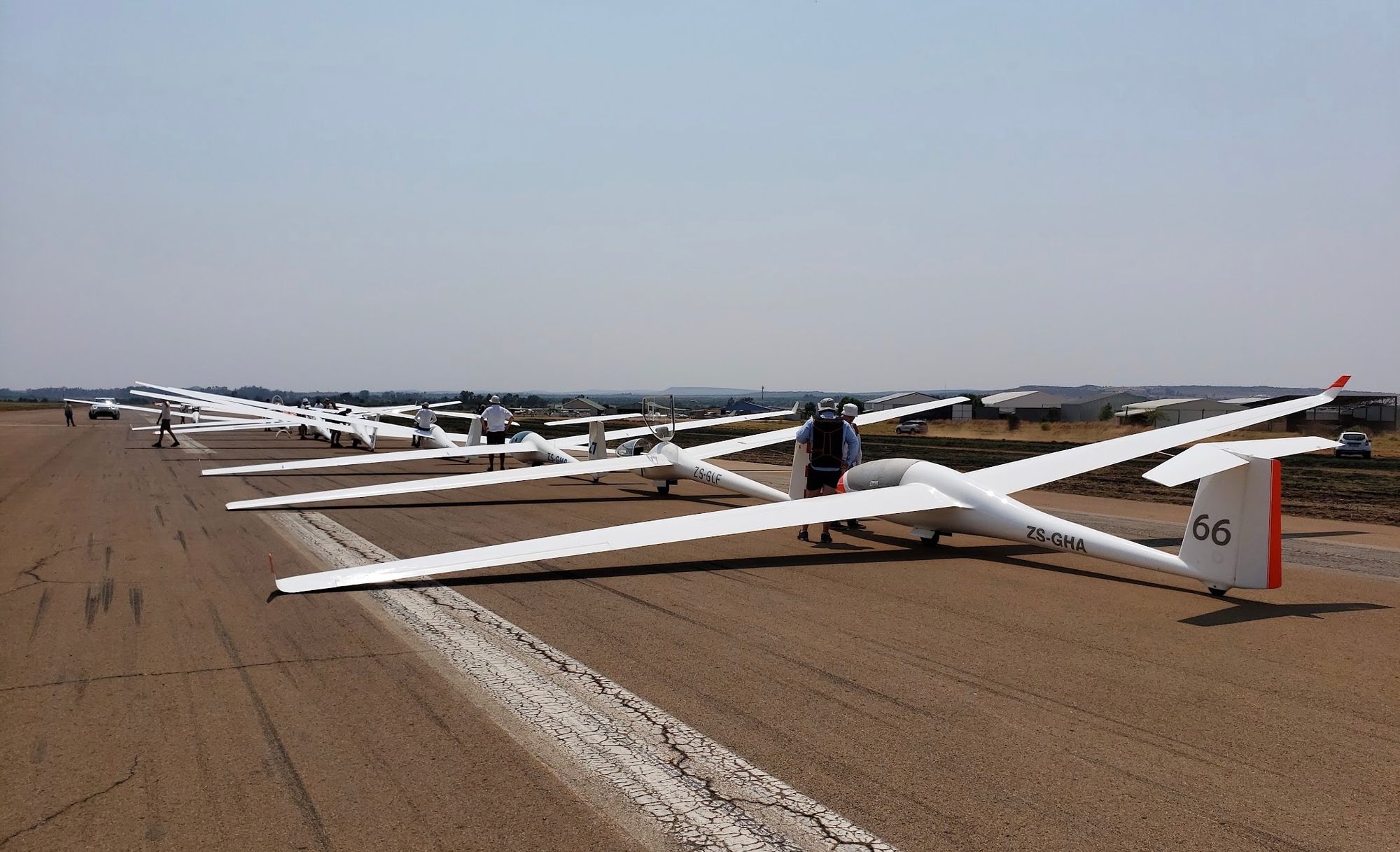
After the first of many daily task briefings, we made our way out to the runway to the grid for launch. The day’s forecast called for moderate strength (15-20 kts) and windy blue conditions, with thermal heights of 14,000 feet expected. Our 270 km task would take us to the west of Potch. The 12 of us in club class launched first, with 15m and 2 seat ships following closely behind. I completed the task in a little under 3 hours for an average speed of 91 kph earning me 3rd place. The actual thermal heights on task were 11,000-12,000 ft, not as high as expected, but enough to get most of us around the course.
Day 2 was a similar 300 km triangle to the west, with moderate wind and thermal strengths, but a bit more consistent conditions on the course. Speeds across the scoreboard were 10-20% faster. I finished the day with a speed of 100 kph, 5th for the day, but enough to stick in 3rd overall.
That's a solid start! By screening the scoring, the 3rd comp day didn't look that easy, unfortunately.
Indeed, Day 3 was a tough day for me and the rest of the club class. Still no clouds, and stronger winds, I was frequently finding up to 25 knots of wind aloft. The strategy of flying along the course line and taking what you can find works as long as there are enough thermals that you stumble into something before you make it to the ground. The first leg was challenging with a crosswind, but I arrived at the first turn point 80 km downrange at a comfortable altitude to begin pushing into a 20 kt headwind. Watching my altimeter wind down as I made slow progress over the ground was a concerning feeling. I was holding out for a strong climb to take me back up. Every time I stopped to turn, I would climb a few hundred feet while getting blown downwind and no closer to completing the task. Finally, as I approached the last plowed fields ahead, it was time to accept my fate. Short of a miracle, I would be landing soon and my mindset switched from survival soaring to picking the most promising field for a safe landing.
After settling down, I called Jason to arrange a retrieval crew, found vehicle access to the field, and began the wait as I was about an hour and a half drive from Potch. About an hour after landing, the field owner came by to check on the “crashed airplane” on his land. He was quite pleasant, and offered me food and water, but was mostly confused why a young American traveled all this way “to fly around in this kak (s#it) country??” My retrieve crew, composed of Philip and Christian Jonker (sons of Uys and Attie) as well as a friend of mine from Johannesburg, arrived as the sun was starting to set. With the 4 of us, we had the glider boxed up before dark. I spent the drive back learning more about South African history and culture, how things came to be as they are now, and many of the societal nuances that travel books and websites don’t teach you.
Sounds like you won't soon forget that. Are you an experienced outlander?
Not at all. I had 2 other off-airport landings up to this point. But this one was by far the least eventful. The field was smooth, and firm and allowed for a normal rollout. In addition, I was talking with some of the local pilots earlier in the week, I received a few bits of wisdom regarding field selection, so I felt well-prepared for this situation.
Interesting, please give us some insights about outlanding tactics in South Africa.
First, recently plowed, brownfields are a good bet. This is what I am familiar with in the California Central Valley. Green fields where other fields are brown are an indication of high furrows and irrigation equipment, both of which are not friendly to gliders. Second, I was told to land near a major road if possible. This avoids the crew needing to navigate large parcels of private property, with possible locked gates and people who are not too fond of strangers trespassing. Third, I was told not to land next to, or around townships.
Wait, what? This is quite common in Europe.
Not in South Africa. Townships are one of the many scars of apartheid and evidence of the extreme socioeconomic inequality that plagues South Africa to this day. They are communities of small shacks, hastily constructed of corrugated iron, plywood, or other inexpensive building materials. The main risk of landing around these communities is getting looted or having your glider vandalized while awaiting crew. While I met pilots who had experienced this before, it seemed to be a rare event. The vast majority of South Africans are nice, helpful, and friendly people.
Interesting. The following two days were canceled. What did you do?
Yeah, the next two days were a bust for soaring. A high-pressure system made its way directly over the task area keeping us grounded. While I was looking forward to flying a ton during my time in Potch, I was not disappointed in the slightest to have time to explore the town and surrounding area with some of the local pilots that I was quickly becoming close friends with. On our first rest day, I visited the local university, where Attie Jonker and Johan Bosman teach the next generation of engineers when they are not designing the world's best gliders. We ate some more tasty local cuisine, and that evening, the group of us junior pilots went on a tour of a local wildlife preserve. This was definitely one of the highlights of the trip, we encountered Buffalos, Springboks, Bonteboks, Ostriches, Jackals, and Rhinos. Being able to share the adventure with my new friends made the experience that much more special.
As part of winning the JS challenge, Niklas and I were offered a tour of the JS factory. The second rest day provided the perfect opportunity for this. While working on my undergraduate degree in aeronautical engineering at Cal Poly, I had the opportunity to work with my professor Paulo Iscold on the Nixus project, a 28m fly-by-wire open class sailplane he was building and testing. Ever since then, I had dreamt about touring a major sailplane factory. Lukas Kirchberg is a design engineer at JS who was also flying in the contest. Since he had the day off as well, he graciously took the time to show us the factory. I was blown away by the scale of production. JS is getting close to producing a glider every week and all stages of production were moving swiftly to make that happen. They have well over 100 highly skilled technicians, production leaders, and quality control staff.
Lucas showed us every step of the production process, from constructing fresh wings from raw carbon and resin to installing controls and engines in the fuselage, then onto paint and exterior detailing, to finally adding the avionics, upholstery, and all the small details that set a JS glider apart from their competition. I currently work for an aerospace company developing unmanned aircraft for government and commercial customers. Everything about JS’s production, from their workspace organization to their quality control is as good, if not better than what would be found in an American aerospace manufacturing facility. The end product is a testament to the quality of engineering, manufacturing, certification, and testing that goes into each aircraft delivered by JS. I know that one day when I have the cash for a modern high-performance racing glider, JS will be on top of my wishlist.
That's quite impressive. But now back to the competition. How the last flights went out for you?
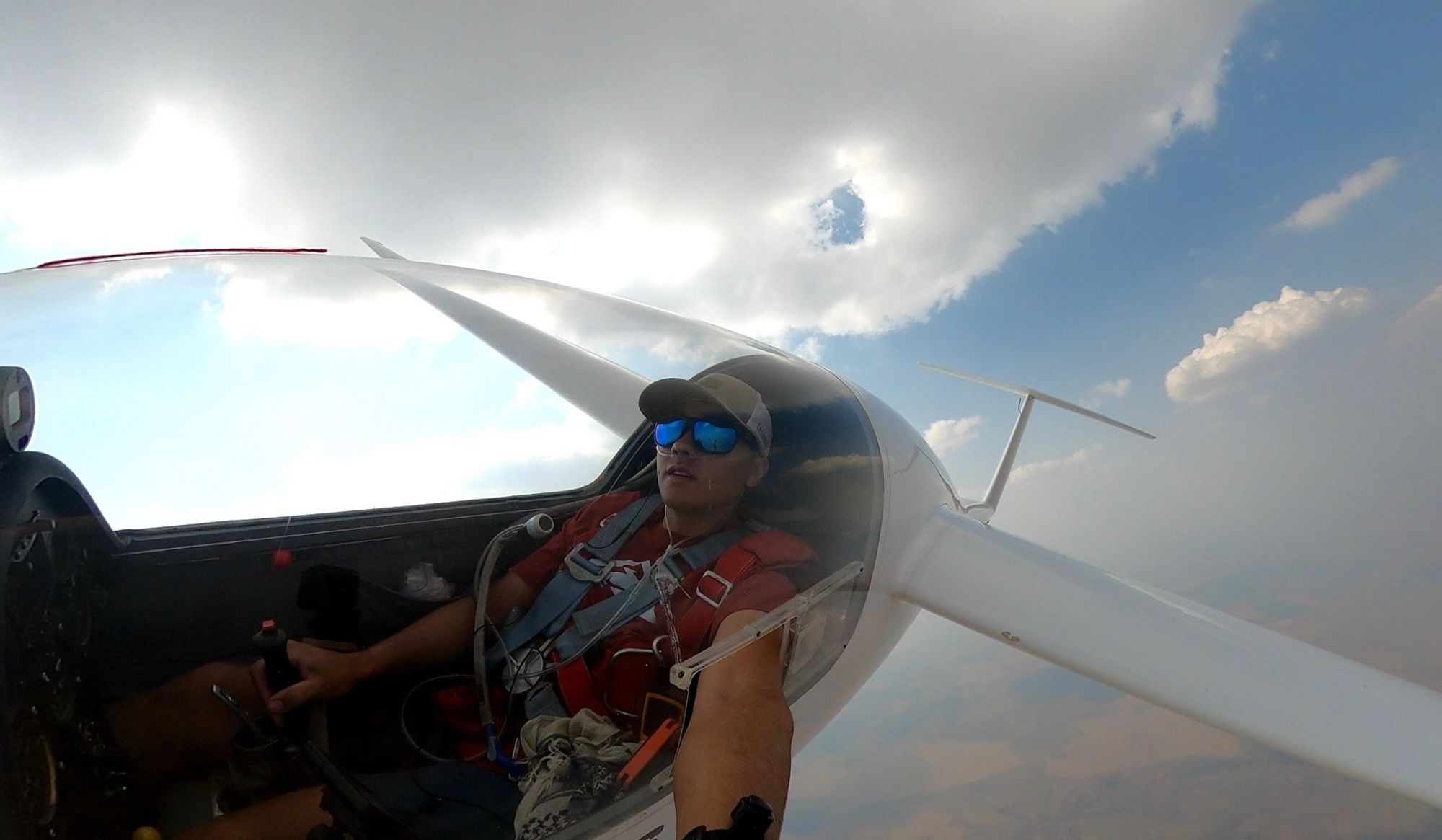
We were back to flying again on day 6. Although the synoptic charts were uninspiring, SkySight was very optimistic, showing strong, high, and marked climbs throughout the task area. Despite the expected moderate winds, the task committee called a 318 km task. On the grid, it felt like groundhog day, a repeat of day 3. Once I was airborne, I immediately suspected SkySight to be wrong. It was blue, and windy, and there was a moderate inversion 4,000 ft below what was expected. Nonetheless, shortly after all ships were launched, the start gate opened. It took me an hour and a half to get a climb that took me high enough even to reach the start line. By this start time, even with a moderate course speed, it would be a stretch to make it back before the day died. I decided to head out on the course, with leg 1 downwind today, and see what I could find. Even with 17 kids on the tail, I was falling like a rock. Not finding anything as I reached the edge of glide from Potch, I made the decision to turn back 9 miles downwind of the airfield with the hopes of avoiding another off-field landing. As I started pushing into the headwind, I was watching the runway rise in my sight picture as my 18:1 required glide ratio began slipping from my grasp. While still 2,000’ AGL, I overflew a couple of short runways at an RC club that looked usable but decided to keep pushing as I had adequate altitude to continue to more fields ahead while still hoping for something to work in the next couple of miles. As I approached the edge of town, uncertain that I would be able to reach the airport, I committed to a group of recently plowed fields and set up for a landing.
Oh no, not again!
Well, that's gliding! For a second time, my field selection worked out and my ship and I were down without a scratch. I let the folks back at the airport know I was down safe, grabbed some water, and started looking for someone who could point me to a drive-in entrance to the fields. I found a group of workers who gave me some instructions to share with my retrieved crew to access the field. They were helpful and friendly but mostly confused about why an airplane had crash landed there and how I was perfectly fine. They gave me a ride back to my glider and just then, I heard sirens and saw some ambulances and firetrucks pull up to the fenceline on the other side of the field. Two paramedics got out and were in a full-on sprint to the glider. I tried my best to get their attention to indicate everything was alright, but we were too far away. After a few hundred feet of sprinting, they arrived at the glider, opened the canopy, and were so confused to find it empty! I arrived 30 seconds later, by then their concern had turned to confusion and I was quickly able to explain the situation and thank them for their concern and fast response. Apparently, multiple passing cars had called in a plane crash and these first responders, on the way to another call stopped to render aid. The paramedics returned to their vehicles and continued to their next call, and I started the wait for my crew as more and more of the workers came to check out the glider and figure out what an American was doing in their field.
Oh, it seems this Outlanding had the potential to make some new South African friends.
Indeed, I learned I had landed in an agricultural college and made many new friends, haha. They took pictures of themselves around the glider and one of them eventually worked up the courage to ask to sit in the cockpit. From there, it was glider show-and-tell until my crew arrived. Eventually, a group of female workers stopped by. Learning I was American, one of the ladies inquired if I was married. I told her I was not, but that I do have a girlfriend back home to which she responded “you know, you can have 2 girlfriends… K-1 visa!” Apparently the show ‘90 day fiance’ is quite popular in South Africa!
Haha, nice story! What about the other gliders on this particular day?
Only landing a few miles from the airport allowed for a fast return back to the airfield. On the ride back, I learned of the chaos that was beginning to unfold on the course. By the middle of the afternoon, already half of the pilots in all 3 classes had either landed out or started their engines, with more pilots doing so as the day progressed. In the end, no one finished the task.
With the retrieve crews already running thin, I was quickly turned around and sent out on another retrieve, this time for my fellow Weglide challenge winner, Niklas. He actually had quite a long flight, completing nearly 3/4th of the task before having to land which made his retrieve considerably longer. The retrieve drive provided me with the opportunity to get to know 3 more of my fellow competitors, exchange soaring stories, and learn more about what it’s like to be South African.
On day 7 you were back in the game. You placed 3rd, congrats!
Having learned to be skeptical of the SkySight forecast over the last few contest days, the task committee called a more conservative task for Day 7. This 205 km 6 turn point task kept us much closer to the airfield which I was glad to see, especially once we were airborne and realized that once again, SkySight was overly optimistic. The beginning of the day proved to be difficult once again, one of those times when luck needed to be on your side. Conditions were blue until mid-afternoon, about halfway through my task. Suddenly, the first CU's of the whole week started to form. In the last hour, I was able to bump my way up to the final glide and finish the day with a speed of 97 kph, landing me in 3rd place and an overall 4th place in the contest. Only 5 of the 12 gliders made it around, so I felt fortunate to be one of those that did.
Finally, day 8 got canceled again?
The 8th and final day did not look promising. A task was called and gliders were towed out to the runway, but ultimately, the 15-20 knots of wind on the ground never subsided enough to launch and the day was scrubbed early afternoon. I kept the 4th place that I finished day 7 with and was quite satisfied with my overall performance in an unfamiliar country with a new-to-me glider.
That evening, after the awards ceremony, all 40 pilots from the 3 classes were treated to spit-roasted lamb. We reminisced about the week, exchanged stories, and said our goodbyes as many of the competitors started their journeys back to their home clubs from all around the country. For me, saying goodbye to so many amazing friends I had made over the past 9 days had proved to be more difficult than anticipated. I made plans to see some who would be flying or crewing in Uvalde in 2024, but for most, I did not know when I would see them next. I reflected on how incredible it was to travel, experience another country and culture, and spend the week with others that shared my passion for silent flight.
Zach. It seems you had a blast! After, flying the contest. How does gliding in South Africa differ from that in the USA?
Before the contest, I was definitely anxious about flying in a completely new
environment. The terrain or lack thereof surrounding Potch was significantly different from what I am used to back home. I am fortunate to live in Central California where nearly all the flying I have done since I entered the sport 5 years ago has been utilizing terrain-based lift sources either in the California coastal mountains, Sierra Nevada, or the Great Basin. Learning what color fields work best, or how far downwind bodies of water killed the lift, were skills I would be
picking up on the fly during this contest. Additionally, in the US, we take the sheer number and density of GA airports and runways for granted. On any halfway decent day where I fly, I can usually keep a known landable airport, strip, or field in glide at all times. In South Africa, I had to be committed to unknown fields for the majority of the flight.
Thank you so much for these detailed insights. Anything to add?
I owe a huge debt of gratitude to those who made this possible. Thank you to the Weglide team for providing the platform for the JS challenge. Thank you Jonker Sailplanes, specifically Jason Aadrian and Katrin Senne for handling all the logistics of the trip, as well as Uys and Attie Jonker for having my back and making me feel like family. Thank you to Just Soaring for helping cover additional expenses associated with attending a contest on the other side of the world. Finally, like at every contest, the volunteers are what make the event possible. Thank you to all crew, organizational staff, and tow pilots who launched us safely and made sure we got home at the end of each day. Without everyone’s support and logistics help, there is no way this trip would have been possible for me.
